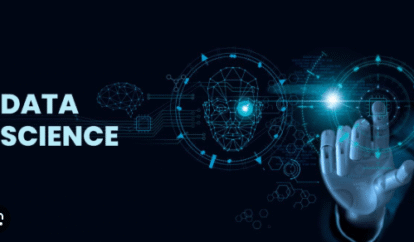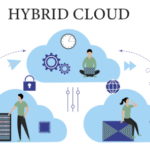Introduction
In today’s competitive marketplace, embracing AI tools for business is not just a luxury — it’s a necessity. From automating repetitive tasks to providing deep data insights, the right tools can dramatically improve efficiency, decision-making, and customer satisfaction. As more businesses adopt AI-powered solutions, credibility, expertise, experience, and trust (E-E-A-T) become essential — users want proven, user-friendly, and secure tools. This article explores the most effective AI tools for businesses, how to choose them wisely, and how to implement them for real results. Along the way, we’ll address key concerns and answer frequently asked questions to ensure your adoption strategy is solid and user-centric.
In this guide, you’ll read about:
- Why AI tools matter in business (benefits, use cases)
- Categories of AI tools — for operations, marketing, sales, customer support
- Top tools to consider in 2025
- How to evaluate and select tools with E-E-A-T in mind
- Implementation tips, pitfalls, and best practices
- FAQs drawn from “People Also Ask” style queries
Let’s dive in.
Why AI Tools Matter for Business
AI tools help businesses scale smarter, not just bigger. Here are some of the top benefits:
- Efficiency and automation: AI can automate repetitive workflows — email triage, data entry, scheduling, invoice processing — freeing teams to focus on higher-level tasks.
- Better decision-making: Predictive analytics, forecasting models, and anomaly detection help leaders make informed choices using data, rather than gut feeling.
- Enhanced customer experience: Chatbots, recommendation engines, and sentiment analysis tools improve response time and personalize interactions.
- Cost savings: Over time, automating manual labor and reducing errors leads to lower operational costs.
- Competitive advantage: Early adoption of AI can differentiate your business in crowded sectors.
However, simply picking any AI tool is not sufficient. To truly benefit, you must choose tools that deliver results and support credibility — that’s where E-E-A-T (expertise, experience, authority, trust) matters.
Categories of AI Tools & Use Cases
Below are key categories of AI tools for business, along with use cases and example types:
| Category | Use Cases | Tool Types / Capabilities |
|---|---|---|
| Operations & Workflow Automation | Automating repetitive tasks, integrating systems | Robotic Process Automation (RPA), workflow orchestration, no-code AI automations |
| Customer Support & Chatbots | Handling first-line queries, reducing response times | AI chatbots, virtual assistants, conversational agents |
| Marketing & Content Creation | Generating ideas, content, ads, SEO optimization | Generative AI, copywriting assistants, image/video creation, marketing automation |
| Sales & CRM | Lead scoring, follow-up automation, pipeline insights | AI sales assistants, predictive lead models, email sequence tools |
| Data Analytics & Insights | Forecasting, trend detection, anomaly alerts | Predictive analytics platforms, BI with AI extensions, natural language querying |
| Social Listening & Reputation Management | Monitoring brand sentiment, reviews | Sentiment analytics, brand monitoring tools |
| Business Planning & Strategy | Generating business plans, financial models | AI advisors, plan builders, forecasting tools |
Examples of Top AI Tools in Business
Here are some standout AI tools across categories as of 2025:
- ChatGPT / OpenAI models — widely used as general-purpose assistants for brainstorming, drafting, summarization, and more.
- Synthesia — AI-driven video generation tool, useful for marketing and internal communications.
- Midjourney — for image creation and visual assets.
- Fathom — meeting summarization, extracting action items.
- n8n — automation and integration workflows (no-code)
- Tidio — combines live chat and AI chatbot features to improve customer support (80%+ of inquiries handled automatically).
- In the domain of sales tools, platforms like RevAI, Groove, and AI-driven deal insights are popular for automating sales workflows.
- YouScan — AI-powered social listening and reputation analytics.
- In business planning, tools like Notion AI, ProAI, Upmetrics help generate structures, content, and forecasts.
These tools reflect different maturity levels — from established models like ChatGPT to newer SaaS startups building AI agents. The key is matching your use case, scale, and risk tolerance.
How to Choose AI Tools with E-E-A-T in Mind
When evaluating AI tools for business, it’s not enough to pick what looks “cool.” You must ensure the tool aligns with trust, credibility, and real-world effectiveness. Here’s a checklist:
- Demonstrated expertise and experience
- Look for case studies or client stories.
- Check whether the vendor has domain experience in your industry.
- Review user reviews, independent tests, benchmarks.
- Transparency & trust
- Can you inspect how the model works (explainability)?
- How is data handled, stored, and secured?
- What’s the vendor’s policy on privacy, bias, and compliance?
- Integration & compatibility
- Does it integrate with your existing systems (CRM, ERP, CMS)?
- Is it scalable (can you grow with it)?
- Is there an API, or modular approach?
- User-friendliness & adoption
- A steep learning curve can derail adoption.
- Tools with intuitive UI, guided prompts, “no-code” features often fare better.
- Training or onboarding support is critical.
- Value and ROI
- Look beyond pricing — assess how much time, errors, or costs it will save.
- Run a pilot or proof-of-concept before full rollout.
- Ethics & compliance
- Check for potential bias, fairness risks, and compliance with regulations in your region (e.g. privacy laws).
- Build guardrails: human oversight, feedback loops, audit logs.
By applying these filters, you reduce the risk of investing in AI tools that fail to deliver or worse, damage reputation.
Implementing AI Tools — Best Practices & Pitfalls to Avoid
To realize the full potential of AI, follow a structured, human-centered approach:
Start with use-case clarity
Don’t adopt “AI for AI’s sake.” Choose 1–3 concrete high-impact use cases first (e.g. automating customer replies, predictive sales scoring) and prove results before expanding.
Build cross-functional collaboration
Include stakeholders from IT, operations, compliance, and business units early. AI affects processes, not just tools.
Clean, unified data is essential
AI models are only as good as the data fed to them. Duplicate, inconsistent, or siloed data undermines accuracy and trust.
Pilot, measure, and iterate
Test in a limited scope, monitor KPIs (accuracy, cost savings, error rates), gather feedback, then expand.
Keep human oversight
AI should assist humans, not replace judgment entirely. Maintain review loops and fallback options.
Manage change and adoption
Offer training, clear documentation, and support. Use champions and incentives for adoption.
Monitor, audit, and refine
Continuously monitor performance, detect drift or bias, retrain models, and update usage.
Be transparent with stakeholders
If customers or employees are affected, communicate how and why AI is used — transparency fosters trust.
Example Workflow: Automating Customer Support with AI Chatbot
- Define scope: Start with FAQs or recurring requests.
- Select tool: Choose a vendor with proven expertise, privacy assurances, and integration with your CRM.
- Train model: Use historically anonymized inquiries, label intents, and define flows.
- Pilot: Capture fallback cases, measure resolution rates, customer satisfaction.
- Iterate: Refine prompts, expand coverage.
- Full deployment: Monitor, collect feedback, build escalation to human agents.
- Review periodically: Check for drift, update knowledge base, test new intents.
This approach is low-risk, manageable, and focused on delivering value quickly.
LSI Keywords & SEO Considerations
To ensure your content resonates with search intent and helps SEO, integrate related (latent semantic indexing) keywords like:
- Business automation with AI
- AI in marketing and sales
- AI for customer support
- AI business tools 2025
- AI adoption challenges
- Enterprise AI solutions
- AI integration with CRM / ERP
- Ethical AI in business
Use them naturally in headings, subheadings, and body content without keyword stuffing.
Also, designing your article to answer “People Also Ask” style queries (i.e. short direct Q&A) increases the odds of featuring in Google’s PAA boxes.
FAQs (People Also Ask Style)
Below are five common questions people ask about AI tools for business, with concise answers.
1. What are the best AI tools for business use?
The “best” tools depend on your specific needs. Broadly, ChatGPT (for content and assistance), Synthesia (video), Tidio (customer support), YouScan (sentiment analytics), and n8n (automation) are top picks. Evaluate them by relevance, integrations, reliability, and trust.
2. How do I choose an AI tool for my business?
Start by defining your use case. Then vet options by proven experience, transparent data practices, user interface, integrations, cost vs ROI, and ethics/compliance.
3. Are AI business tools safe and trustworthy?
Yes — if you choose vendors with strong data governance, audit trails, explainability, compliance, and retain human oversight. Always pilot before full deployment.
4. Can small businesses afford AI tools?
Absolutely. Many AI solutions are now available with flexible pricing or freemium tiers. Small businesses use them especially for automating data entry, email outreach, content creation and thereby freeing up human capital.
5. What are the challenges in using AI in business?
Common challenges include data quality issues, resistance from employees, lack of clear ROI, bias or incorrect outputs, integration complexity, and regulatory or ethical concerns.
Conclusion
Adopting the right AI tools for business can unlock tremendous value — from automating mundane tasks to enabling data-driven decisions and enhancing customer experience. But success doesn’t come from picking the flashiest product; it comes from choosing tools grounded in credibility, transparency, and real-world results (E-E-A-T). Start with narrow, high-impact use cases, pilot them, measure outcomes, and build human-centered guardrails.
As you scale, maintain ongoing oversight, retrain models, iterate processes, and always emphasize trust and clarity. When implemented thoughtfully, AI becomes a force multiplier — enabling your team to focus on strategy, creativity, and growth. Embrace AI tools with intention, and you’ll shape a smarter, more competitive future for your business.





 Real-World Cloud Computing Examples You Should Know
Real-World Cloud Computing Examples You Should Know